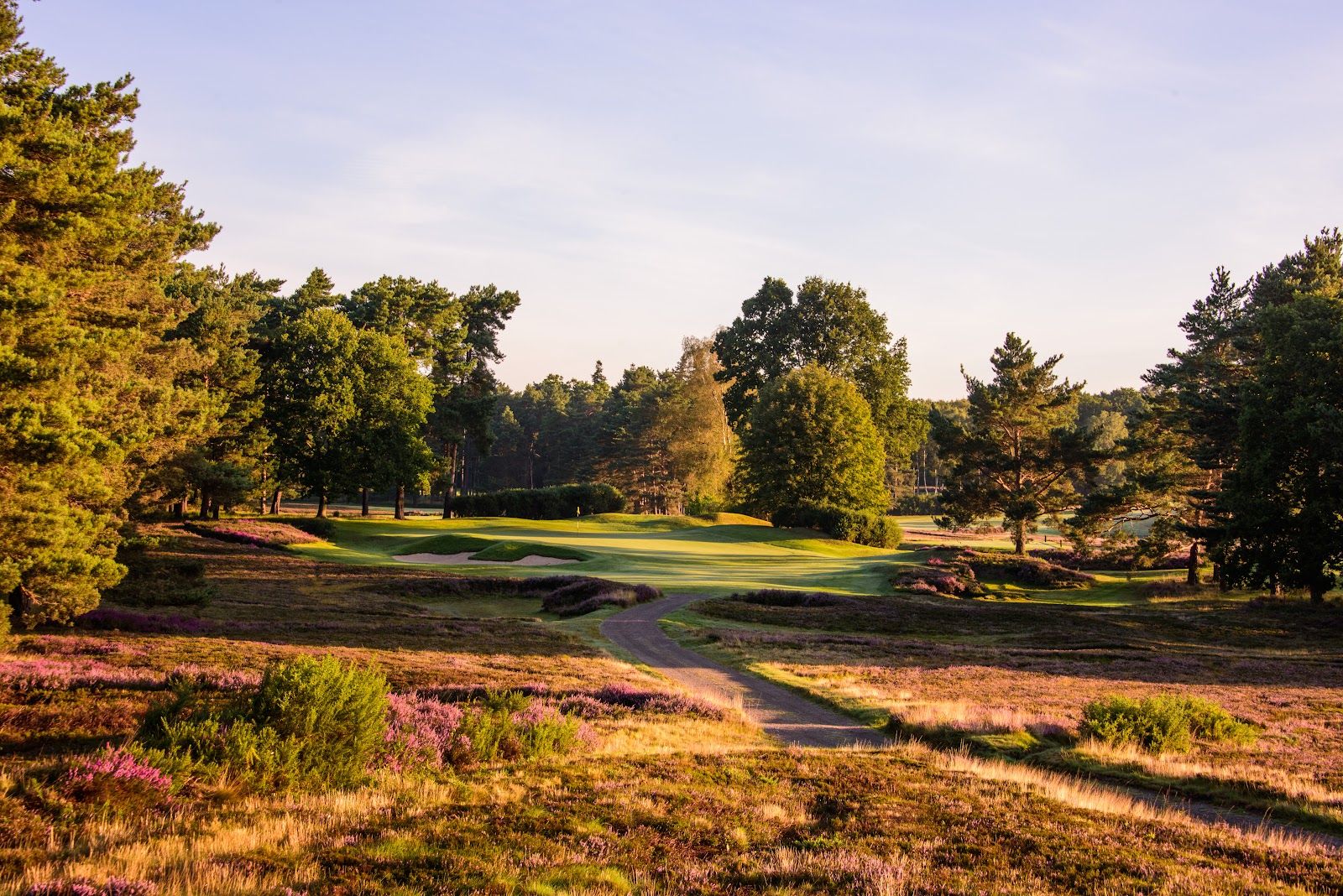
- AddressRidgemount Rd, Ascot SL5 9RR, UK
Taken together, the New and Old courses at Sunningdale Golf Club represent the finest 36 holes of golf in the whole of the British Isles. The same architect who made modifications to Sunningdale’s Old course, Harry Colt, designed the New course, which opened for play in 1923 to meet the ever-increasing demand for golf.
In the book Sunningdale Golf Club 1900-2000 author John Whitfield writes:
“Compared with the Old Course, the New has seen many more changes in its short life. In particular, the original holes 6, 7, 8, 9 and 10 were much criticised – mainly by older members – for the amount of climbing involved, and this led to major changes in the mid 1930s.
These holes were on the land to the right of the 10th hole on the Old Course, and to the left of 9th hole on the New course; some remnants of them can still be seen. Apart from the 6th hole, now the 9th, the others were all abandoned in 1934.
An Extraordinary Meeting was called to consider alterations to the New Course. A report by Simpson & Company, Golf Architect Ltd., had been commissioned by the Committee, and was discussed at the meeting. The E.G.M passed Mr. Simpson's proposals unanimously. His main recommendations concerned holes 6 to 10... which would overcome the problem of the excessive undulations of the existing holes.
In 1937, J.S.F. Morrison DFC, who had been Captain of the club in 1933, and was now a golf course architect, was asked to review the layout of these new holes which evidently had encountered much criticism. Again, no record of his report, nor the action taken on it, survives, but it is fairly certain that something like the present day layout resulted.
In particular, the 6th hole dogleg was created, the short 7th was scrapped, and the 8th hole was played from the present tee to a green cut into the hill behind the 5th green; the present green, further on and to the right was made in 1961. Simpson's 9th hole and 10th green were scrapped, resulting in the present 9th hole and green. The short 10th hole was revived, but from the present tee, and the 11th hole was again lengthened into the current lefthand dogleg.
All in all, the alterations to these holes, 6 to 11 on the New, were the most radical on either course, and also the most contentious.”
The New is a wonderful driving course for it is more open than the Old; the trees do not encroach quite so much. Having said this, the New demands long carries from its elevated tees over heathery terrain to narrow fairways. The club has been following a programme of regeneration that has involved the felling of a number of trees, thereby allowing the heather to return. In addition, this has cleared the way for long lost views to reappear across to Chobham Common in the south.
Many people will come to Sunningdale hell-bent on playing the Old course, but if it’s a real athletic challenge you are after, you will get severely tested on the rugged 6,700-yard par 70 New, a tougher, more rounded test of golf than the Old. For many years, Jack Nicklaus held the course record with a 67, which was a testament to the technical test of the New course. However, in June 2009, in Open Championship Final Qualifying, England’s Graeme Storm smashed the course record with an amazing eight-under 62 thereby securing his place in the 2009 Open at Turnberry.
There are many excellent and memorable holes on the New, perhaps not as many as there are on the Old but certainly the 5th is worthy of mention, a charming par three. The views across the treetops to the common beyond are superb.
Sunningdale is located on Surrey and Berkshire’s famous, magical sand-belt, home to so many other fine golf courses. There is no better natural inland golfing terrain anywhere in the world and Sunningdale is blessed with two of the world’s very best heathland courses.
Course Reviews
Leave a Review
This course has not been reviewed.
If you have played this course, consider .
Thanks for the review
Your review has been successfully submitted and will be reviewed for approval.
Course Reviewed
You’ve already submitted a review for this course.
Course Architect
View All
Harry Colt studied law at Clare College, Cambridge. Twelve months after his 1887 enrolment, he joined the committee of the Cambridge University Golf Club and in 1889 became the club's first captain.





